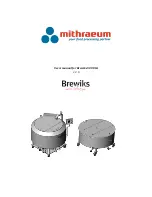
1-8
SAFETY
HT4100 Instruction Manual: Operation
• Never allow electrical contact between the plasma arc and a cylinder.
• Never expose cylinders to excessive heat, sparks, slag or open flame.
• Never use hammers, wrenches or other tools to open stuck cylinder valves.
Label and color-code all gas hoses in order to clearly identify the type of gas in each
hose. Consult applicable national or local codes.
•
Never use the oxygen hose for any gas other than oxygen.
•
Replace hose that is damaged by physical abuse or by sparks, heat or open
flame.
•
Lay hose out straight to prevent kinks.
•
Coil excess hose and place it out of the way to prevent damage and to eliminate
tripping danger.
•
Examine hoses at regular intervals for leaks, wear, loose connections or other
hazard.
•
Keep hose lengths to a minimum to prevent damage, reduce pressure drop and to
prevent possible volume flow restriction.
Grounding
Before operating the plasma system:
• Be sure the power cord is plugged into a properly grounded outlet or that the
power cord ground wire is properly connected to the ground in the disconnect box.
• If installation of the plasma system involves connecting the power cord to the
power supply, ensure that the power cord ground wire is properly connected.
Conform to CSA standards by placing the power cord ground wire on the stud
first; then place the other wires on top of the power cord ground. Fasten the
retaining nut tightly.
• Make sure that all electrical connections are tight to avoid excessive heating.
• Clamp the work cable with good metal-to-metal contact to the workpiece (not the
portion that will fall away) or to the work table.
• Connect the work table to a good earth ground. Consult the U.S. National Electri-
cal Code, Article 250, Section H
Grounding Electrode System
, or other appropri-
ate national or local codes.
For additional information, refer to the
Standards Index
in this manual.
Hoses
Input
Power
Work
Table
Work
Table
















































